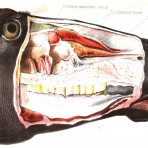Lecture: The Great Epizootic of 1872-1873
Lecture: The Great Epizootic of 1872-1873
Categories: General, Lectures and Seminars | Intended for Anyone

303 Paterson Hall
1125 Colonel By Dr, Ottawa, ON
Contact Information
Joanna Dean, (613) 520-2828, history@carleton.ca
Registration
No registration required.
Cost
Free
About this Event
Host Organization: Department of History
More Information: Please click here for additional details.
Sean Kheraj presents the third in the 2014 Shannon Lectures Series in Animal History, "The Great Epizootic of 1872-1873" in the Humanities Lecture Theatre, 303 Paterson Hall, from 1:00-2:30 pm.
In early October 1872, a mysterious illness swept through the urban horse population of Toronto. The Globe first reported the phenomenon on 5 October 1872, noting that “[f]or some time past a large number of horses in the city have been affected with disease of the respiratory organs, but during the present week another disease has prevailed to an alarming extent among the horses in this district.” Horse owners and other observers were perplexed and assumed the disease to be a “catarrhal fever.” Horses throughout the city, particularly those kept at the street railway company stables, suffered from sore throats and hacking coughs which kept them from working for up to two weeks. It was, as Dr. Andrew Smith from the Ontario Veterinary College wrote, a “considerable loss and annoyance to owners of horses and to the community generally.”
The outbreak of disease among the horses of Toronto in the autumn of 1872 was the beginning of a continent-wide pandemic known as “The Great Epizootic.” Following the events in Toronto, the disease spread throughout North America, reaching as far south as Cuba. This paper will trace the origins of this disease, eventually thought to be a virulent strain of equine influenza, and its impact on urban life in North America in 1872-73 as it spread from Toronto to all of the major cities on the continent. The Great Epizootic not only illustrated the centrality of domestic animals to the functioning of nineteenth-century North American cities, but it also demonstrated that these cities generated unique ecological conditions and a networked disease pool capable of producing animal disease environments that were distinctly urban in character.
Sean Kheraj is an assistant professor in the Department of History at York University. His research examines the place of animals in Canadian cities in the nineteenth and twentieth centuries. He is also an editor for the Network in Canadian History and Environment and he produces a regular Canadian environmental history podcast, Nature’s Past. For more about his work, visit http://seankheraj.com.
The Shannon Lectures in History is a series of thematically linked public lectures offered annually at Carleton University made possible through the Shannon Donation, a major anonymous gift from a friend of the Department of History